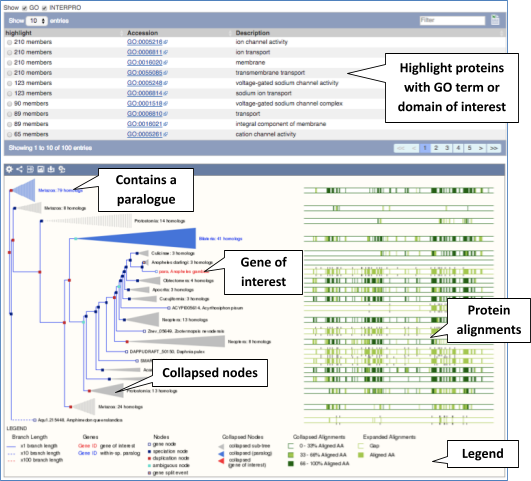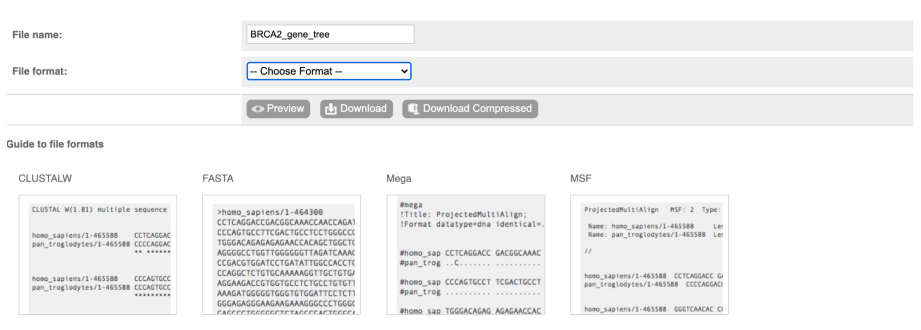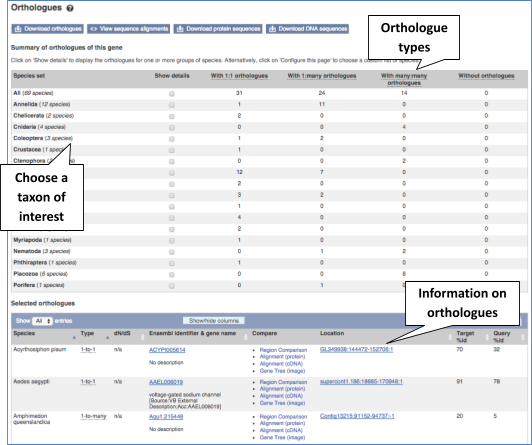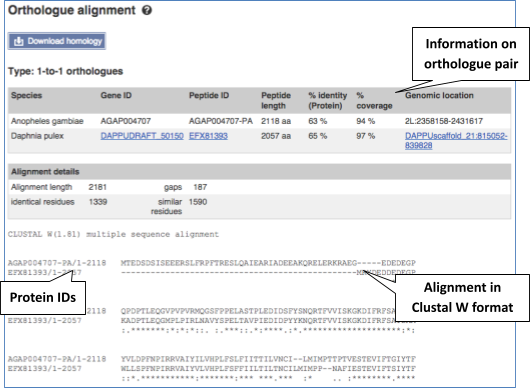Gene trees and homologues, Demo
Let’s look at the homologues of Anopheles gambiae para on Ensembl Metazoa. Search for the gene and go to the Gene tab.
The menu shows two sets of comparative genomic data, Metazoan Compara and Pan-taxonomic compara. We’ll start by looking at Metazoan Compara: Gene tree, which will display the current gene in the context of a phylogenetic tree used to determine orthologues and paralogues.

Funnels indicate collapsed nodes. We can expand them by clicking on the node and selecting Expand this sub-tree from the pop-up menu.

You can download the tree in a variety of formats. Click on the download icon in the bar at the top of the image to get a pop-up where you can choose your format.


If there is a protein domain or a function you are particularly interested in, use the table at the top to highlight all proteins in the table that are associated with a particular GO term or Interpro ID.
Go to Pan-taxonomic Compara: Gene tree. You will see the same display as the Metazoan tree, but incorporating data from other taxa.
We can look at homologues in the Orthologues and Paralogues pages, for both Metazoan and Pan-taxonomic, which can be accessed from the left-hand menu. If there are no orthologues or paralogues, then the name will be greyed out.
Click on Metazoan Compara:Orthologues to see the orthologues available.

Choose to see only Crustacea orthologues by selecting the box. The table below will now only show details of crustacea orthologues. Let’s look at Daphnia pulex.

Links from the orthologue allow you to go to alignments of the orthologous proteins and cDNAs. Click on View Sequence Alignments -> View Protein Alignment for the Daphnia pulex orthologue.







